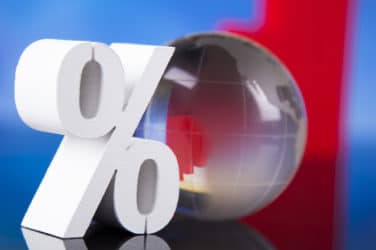Markets Media recently caught up with Chris White, CEO of ViableMkts, to discuss the past, present and future of U.S. Treasury market structure.
The topic will be the focus of ViableMkt’s Rates Evolved conference, Jan. 24 in New York.
How has the structure of the U.S. Treasury market evolved?
Over the past 10 years, mergers, acquisitions and new solutions have been a staple of electronic trading in the inter-dealer U.S. Treasury Market. It can easily be argued that this area of the fixed income universe has been the most competitive when it comes to execution solutions. For example, from 2001 to 2014, the market share split for trading volumes was virtually 50/50 between eSpeed and BrokerTec. However, recent trends indicate a migration to a single solution with estimates as high as 80% market share under the single BrokerTec platform. This competitive change gives rise to a fundamental question: Which path will optimize the U.S. Treasury Market, a single-solution monopoly or free competition with multiple platforms?
Is there is a historical precedent to the current Treasury market?
The U.S. Equity Market faced a similar dilemma 50 years ago when many argued that supporting the NYSE as a single-venue solution for listed stock trading would be the ideal approach to improving trading conditions. At this time in history, the NYSE had established itself as the most dominant market center in the world for U.S. equity trading, but it was under threat. A new way of trading called the “third market” was creating an environment where customers could find liquidity at lower trading costs. The pro-NYSE camp believed that if other liquidity pools gained traction it would “fractionalize” the markets which would produce wider spreads and reduce the economy of scale for all market participants. Therefore, competition in the form of other trading venues would ultimately hurt the market for the end investor.
While there are some benefits for a monopoly solution for trading, it has been shown that a competitive environment with multiple platforms creates a better market.
What are the drawbacks of a monopoly solution for trading?
The first issue is trading costs. The more a single platform dominates the trading landscape, the less likely it is that transaction costs will be reduced. For example, the NYSE maintained a fixed commission structure for all stock trades for 180 years, which kept fees for trading artificially high. In the U.S. Treasury Market, we have seen similar behavior where the dominant inter-dealer platforms maintained a 1/4 of a 1/32 tick size in the 2-year cash treasury for 20 years.
NYSE abolished their fixed commission structure in 1975 and finally allowed competition to dictate transaction fees. The tradition was broken because the lower fees being offered by alternative trading venues forced them to adjust or lose market share. Recently, BrokerTec and ESpeed lowered their 2-year cash treasury tick size to 1/8 of a 1/32, almost a full year after the Fenics UST platform had first established an even smaller tick increment of 1/16 of a 1/32 on their trading system.
To put this into real money terms, 1/16 of a 1/32 is equal to $19.5 per million. If the market trades $500 billion a day in 2-year cash treasuries, maintaining a 1/16th tick-size creates the potential for end investors to save and additional ~$9.75MM a day, or ~$2.4B a year in transaction fees. Without free competition amongst electronic trading platforms, that cost efficiency would not have been possible.
The second issue is systemic risk. An inherent problem with a monopoly environment for trading is that the entire market depends on that single solution in order to function.
What is the path to an optimal U.S. Treasury Market?
By promoting free competition in the U.S. equity market, multiple venues have matured to create natural redundancies that eliminate structural risk to the market. Meanwhile, the recent technology glitch at BrokerTec brought trading in Treasuries to a near-halt. To realize the same benefits of reduced costs and improved safety in the U.S. Treasury Market, competition must be the path and remain a priority.







